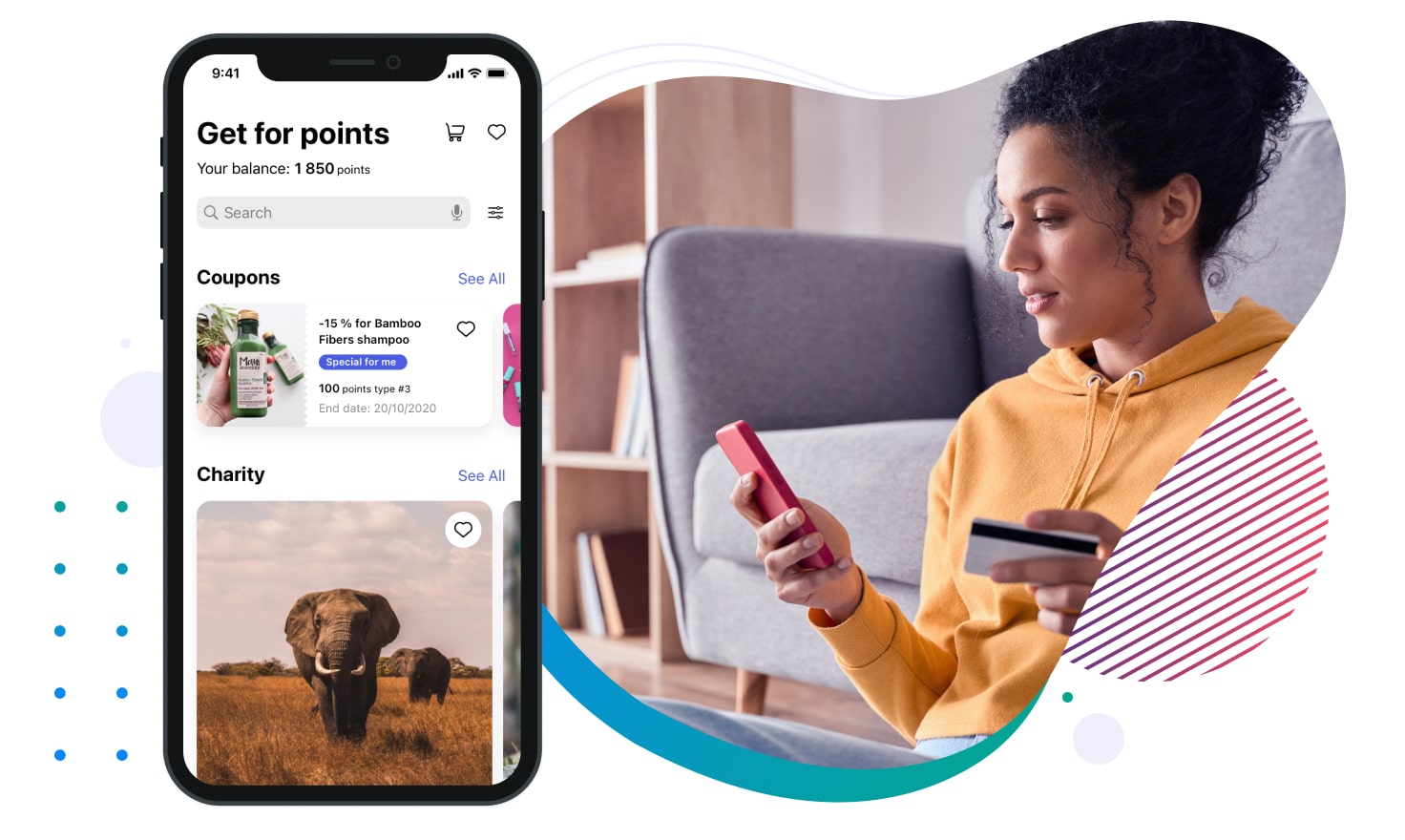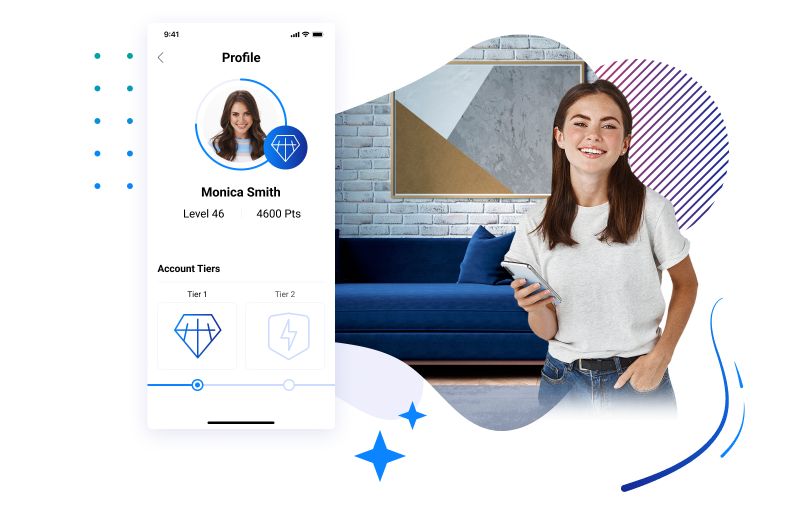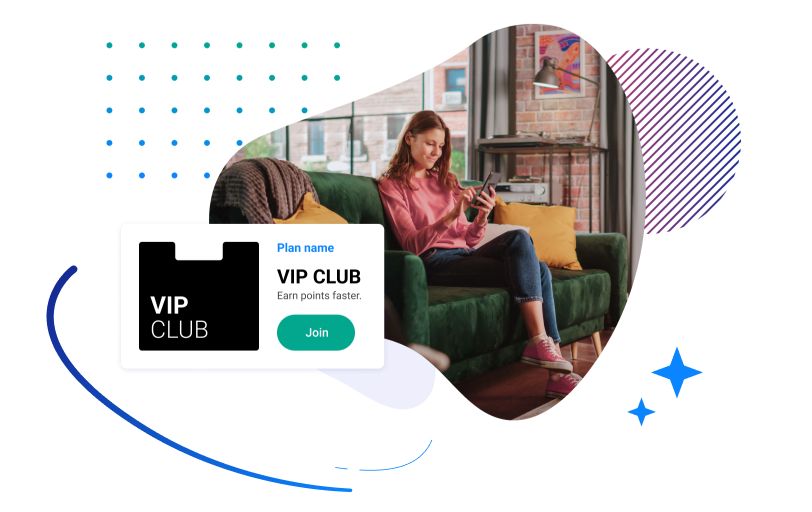Level Up: Discover the 10 Different Types of Loyalty Programs
- Published
- 8 min reading

Welcome to the dynamic realm of customer loyalty programs, where businesses and customers embark on a buyer’s journey filled with rewards, perks, and engaging experiences. Loyalty programs have become the secret ingredient to creating unforgettable connections between brands and their customers. But it’s not just about creating the experience, it’s also pushing the bottom line.
Research has found that:
- 43% of U.S. customers spend more with the businesses they are loyal to.
- Loyalty program members spend between 12-18% more per year than other customers.
- 54% of customers consider no longer shopping with retailers who don’t provide them with engaging content and relevant coupons.
- 69% of consumers say the choice of retailer is influenced by where they can earn customer loyalty/rewards program points.
We’re going to take you on a ride through the captivating universe of loyalty programs, exploring their many features, while uncovering the best fit for your business. In this loyalty guide, we'll unveil the many levels of loyalty, empowering you to choose the program that best fits your unique style.
Easy: What is a Customer Loyalty Program?
A customer loyalty program is a highly structured marketing strategy that encourages consumers to repeatedly engage with a brand. It’s designed to reward and incentivize loyal customers for their continued patronage – fostering a sense of loyalty, trust, and emotional connectivity along the way.
All great journeys must begin somewhere, so why not start with a customer loyalty program?
But how?
Customers typically earn rewards, discounts, or incentives based on their ongoing engagement and purchases. With the right strategy and technology in place, these can be highly personalized. It’s all about creating a mutually beneficial, almost symbiotic relationship, where customers feel valued and recognized for their loyalty. Meanwhile, businesses benefit from increased customer retention, higher customer lifetime value (CLV), and advocacy. Not to mention invaluable zero-party data. In a soon-to-be cookieless world, the future of data acquisition lies in a robust loyalty program. So, you may be asking yourself what are the most common types of loyalty programs?
Let’s take a look at the different types of loyalty programs and how your business can leverage the right solutions for maximum efficiency.
Advanced: What Are the Different Types of Loyalty Programs?
There are many different types of customer loyalty programs out there. Listed below are some of the most commonly used strategies, along with some tips on how to use them.
- Points-based loyalty programs
- Tiered loyalty programs
- Subscription models (paid programs)
- Value-based programs
- Gamification options
- Exclusive event access (VIP programs)
- Personalized offers
- Partnered programs
- Hybrid models
In a customer loyalty program, members typically earn rewards, discounts, or other incentives based on their ongoing engagement and purchases.
These rewards can take various forms, such as discounts, free merchandise, exclusive access to events, personalized offers, or even VIP treatment. All loyalty program types have unique strengths and target markets, some of which can be combined to create the ultimate customer reward program.
1. Points-Based Loyalty Programs: Unlock the Magic of Rewards
Points-based loyalty programs are a popular choice for businesses looking to encourage repeat purchases and reward customer loyalty. Members earn points for every qualifying purchase they make, and these points can be accumulated and redeemed for different kinds of rewards – such as discounts, merchandise, or exclusive offers. Out of all the loyalty program types, points-based systems are some of the simplest.
Points-based loyalty programs are particularly effective for retailers, e-commerce businesses, and any business seeking to incentivize frequent purchases.
- Pros: Encourages repeat purchases, easy to understand, and is suitable for various business sizes.
- Cons: May lack personalization and fail to stand out without the right strategy.
- Best for: Fuel, retailers, grocery stores, and eCommerce

2. Punch Card Programs: Collect Stamps Along the Way
Punch card programs are a classic loyalty program type that uses physical or digital punch cards to track customer purchases and incentives for future business. For each visit or purchase, members receive a punch or a digital stamp on their card. Once they collect a predetermined number of punches, they become eligible for a reward or discount. Punch card programs are simple and cost-effective to implement, making them suitable for local and small businesses – but can also be a fantastic solution for large enterprises aiming to simplify their loyalty initiatives.
- Pros: Easy to implement, versatile, and great for businesses of all sizes.
- Cons: Limited in tracking customer preferences and personalization – no option to engage members between purchases (unless digitalized).
- Best for: Restaurants, coffee shops, and retailers.
3. Cashback Loyalty Programs: Discover the Pot of Gold
Cashback loyalty programs provide members with a percentage or fixed amount of cash back on their purchases. This type of program appeals to price-conscious customers who are looking to maximize their savings. Customers feel rewarded immediately as they receive cash back or credits that can be used towards future purchases. Cashback loyalty programs work well for online retailers, multi-partnered (coalition) programs, e-commerce platforms, and businesses targeting value-conscious shoppers.
- Pros: Instant gratification! Appeals to savvy shoppers seeking tangible savings.
- Cons: Integration with payment systems is required for the magic to unfold.
- Best for: Banks, airlines, and hotels.
4. Tiered Loyalty Programs: Ascend the Loyalty Kingdom
Are you looking to give your consumers multiple levels or tiers of benefits based on customer engagement or spending? As members progress through the tiers, they unlock increasingly valuable benefits and exclusive perks. Tiered programs enhance customer status and create a sense of exclusivity, encouraging people to spend more to reach higher tiers. It’s important to note that personalizing the buyer’s journey with this program requires intensive customer experience management and design.
This type of program is fitting for premium and luxury brands, businesses with diverse product offerings, and those aiming to encourage customer advancement.
- Pros: Craft exclusivity, facilitate progression, and personalize customer experiences.
- Cons: Requires careful tier design and benefit differentiation.
- Best for: Fashion retailers, airlines, beauty companies, and hotels.

5. Coalition Loyalty Programs: Forming Powerful Alliances
Do you need to connect multiple businesses or brands to offer a unified loyalty program? That’s where coalition loyalty programs come into play. Customers can earn and redeem rewards across various partner brands, allowing for a broader range of earning and redemption opportunities.
Coalition loyalty programs enhance the value proposition for customers, as they have access to a larger pool of rewards. This type of program is best suited for businesses with complementary products or services, industry partnerships, and those seeking to broaden customer reach. However, it can also be a way for brands to expand their marketing sphere, rolling out products or services into new consumer landscapes.
- Pros: A diverse world of earning and redemption options with partner brands.
- Cons: Collaboration requires cooperation among participating brands to conjure loyalty magic.
- Best for: Telecom providers, banks, airlines, and hotels.
6. Paid Loyalty Programs: Unlock the Secret Society
Offer exclusive benefits, experiences, or enhanced services in exchange for a membership fee or subscription through paid loyalty programs. These programs cater to customers who are willing to pay for premium offerings and desire an elevated experience. In fact, nearly 63% of consumers are already members of at least one paid program. Paid loyalty programs are suitable for premium brands, luxury services, and businesses catering to affluent customers seeking exclusive perks.
- Pros: Embrace exclusivity! Premium perks and enchanting experiences await those willing to pay.
- Cons: Price-sensitive souls beware! Must provide an irresistible value proposition to justify the cost.
- Best for: Jewelry retailers, eCommerce companies, beauty companies, airlines, and hotels.

7. Value-Based Loyalty Programs: Embrace the Magic of Giving Back
Align with your customers' social or environmental values by donating a percentage of purchases to a charitable cause of their choice or supporting sustainability initiatives. Value-based loyalty programs resonate with socially-conscious consumers who want to make a positive impact through their purchases.
Many businesses have been built on foundational values. Nowadays, it’s even more crucial that consumers feel these values at every stage of the buyer’s journey. Why? Well, 83% of millennials want brands to align with them on their values. Value-based loyalty programs work well for sustainable brands, businesses with a strong social mission, and those targeting socially-conscious consumers.
- Pros: Allows your company mission to remain “front-of-mind” with consumers, connects purchases with philanthropy
- Cons: Commitment to social causes must be communicated effectively, pseudo-approaches or veneered efforts can lead to PR disasters.
- Best for: All businesses with sustainability values and those looking to make a positive impact.
8. Gamified Loyalty Programs: Embark on an Epic Quest
Leverage game-like elements to create a sense of excitement and engagement. Gamified loyalty programs allow customers to participate in challenges, earn badges, or compete with others to unlock rewards or reach higher levels. This type of program is growing, and offers a way to incentives purchases along with boosting internal employee satisfaction.
- Pros: Boosts customer excitement and interaction while fostering emotional loyalty.
- Cons: Needs continuous content creation and development to ensure success.
- Best for: All businesses looking to make deeper connections with its members.
9. Refer-a-Friend Programs: Join Forces and Conquer
Refer-a-friend programs encourage customers to refer their friends, family, or colleagues to the business in exchange for rewards or incentives. This type of program harnesses the power of word-of-mouth marketing, as customers become brand advocates and actively promote the business to their network.
Referral programs are best suited for businesses powered by loyal advocates, subscription-based services, and those seeking to leverage their existing customer base to expand their reach.
- Pros: Connects your customer base, easy-to-manage, and incentivizes word-of-mouth.
- Cons: Tracking and managing referrals can be a challenging quest, unless you have the right tools.
- Best for: Businesses powered by loyal advocates, subscription models, and social connectors.
10. Hybrid Loyalty Programs: Buildable Loyalty
More often than not, one type of loyalty program won’t be enough. Top brands will combine the best loyalty programs and customer reward systems to build the ultimate solution.
- Pros: Combine the forces of loyalty realms! Create a unique loyalty experience tailored to your business.
- Cons: Caution! Requires skillful weaving of program elements and careful management.
- Best for: All innovators and businesses seeking a loyalty program that reflects their brand essence.
Expert: How to Choose the Best Loyalty Program for Your Business
Selecting the right loyalty program for your business requires careful consideration of your goals, target audience, and budget. Evaluate the pros and cons of each loyalty program type to determine which aligns best with your business objectives. Consider factors such as ease of implementation, customer preferences, and the resources required to manage the program effectively.
Here’s a 6-step approach:
- Define Your Objectives: Start by identifying your specific business objectives. Are you aiming to increase customer retention, drive repeat purchases, expand your customer base, or enhance brand loyalty? Clarifying your goals will help you align your loyalty program with your desired outcomes.
- Understand Your Target Audience: Gain a deep understanding of your target audience's preferences, behavior, and demographics. Consider their motivations, buying patterns, and what type of rewards or incentives would resonate with them. For example, if you have a tech-savvy audience, a gamified loyalty program with digital badges and virtual rewards may be appealing.
- Research Successful Examples: Study successful loyalty program examples within your industry. Look for businesses that have effectively implemented loyalty programs and achieved desirable results. For instance, Sephora's Beauty Insider program provides personalized product recommendations, exclusive access to events, and beauty rewards, catering to its beauty-conscious customer base.
- Consider Your Budget and Resources: Evaluate the resources and budget you can allocate to your loyalty program. Some programs require significant investment in technology, customer support, or rewards, while others can be implemented with minimal costs. Find a program that aligns with your budget and allows for scalability as your business grows.
- Assess Program Complexity: Consider the complexity of each loyalty program type and evaluate whether it aligns with your business capabilities. Some programs, like points-based programs, are relatively straightforward to implement, while others, such as coalition programs, require collaboration with partner businesses. Choose a program that suits your internal capabilities and resources.
- Test and Iterate: Don't be afraid to test different loyalty program types and iterate based on customer feedback. Monitor the program's performance, collect data on customer engagement and satisfaction, and make adjustments as needed to optimize results.
End of Tutorial: How Comarch Can Help
Don’t navigate the complex world of loyalty programs alone. Comarch is a leading partner in driving customer engagement, fostering brand loyalty, and achieving sustainable growth through many types of loyalty programs. We ensure that your business can create moments of magic for your customers and help you build lasting relationships that drive long-term success.
Ready to take your loyalty program to the next level? Discover how our experts can transform your customer relationships and propel your business forward. Harness the power of loyalty today.



